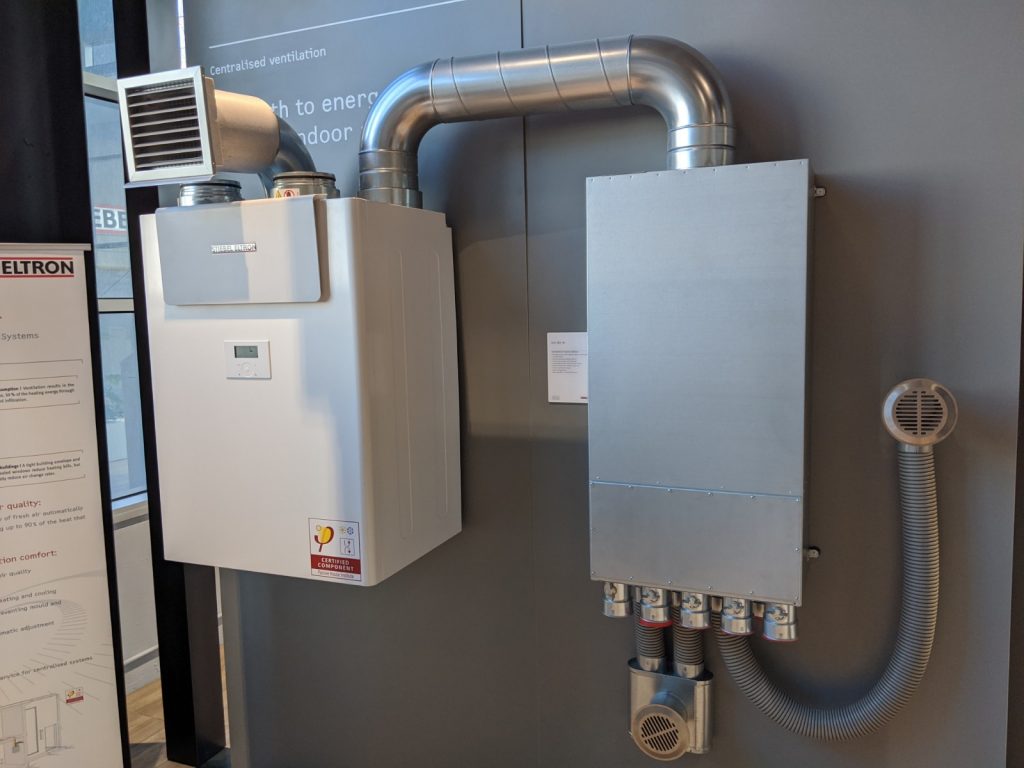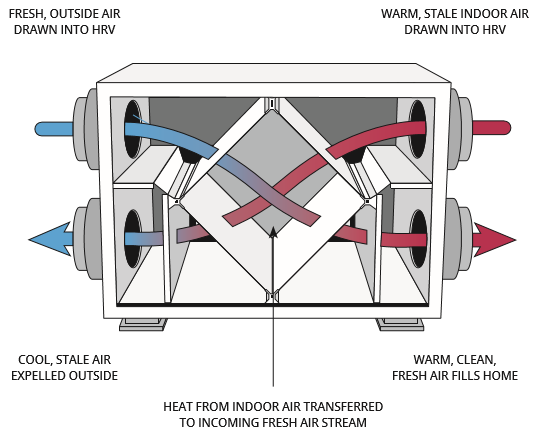Discovering the Benefits of Heat Recovery Ventilation for Power Performance in Residences
Heat Recovery Ventilation (HRV) systems offer home owners a functional strategy to improving energy efficiency. By recovering heat from outbound air, these systems can substantially decrease home heating and cooling prices. Additionally, they offer a constant supply of fresh air, improving indoor air top quality and convenience levels. As property owners consider lasting options, recognizing the subtleties of HRV systems comes to be progressively essential. What aspects should one assess prior to making such an investment?
Comprehending Heat Recovery Ventilation Equipments

How HRV Boosts Indoor Air Quality

Energy Savings: The Monetary Benefits of HRV
Taking full advantage of energy effectiveness, heat recovery ventilation (HRV) systems supply substantial economic advantages for home owners. By recuperating and reusing warm from exhaust air, HRVs markedly reduce heating & cooling prices. This innovation can lead to power cost savings of approximately 30%, relying on environment and use patterns. House owners usually see minimized utility bills soon after setup, making HRVs a financially smart investment in time. Additionally, several areas supply rewards or refunds for energy-efficient upgrades, additionally improving the financial appeal. As more power costs continue to climb, the cost-effectiveness of HRVs comes to be progressively clear. In general, the incorporation of HRV systems not just promotes power effectiveness but additionally contributes to lasting financial savings for families.
The Environmental Impact of Heat Recovery Ventilation
A substantial environmental advantage of heat recovery ventilation (HRV) systems depends on their ability to reduce general power consumption. By recovering warmth from exhaust air and transferring it to incoming fresh air, HRV systems decrease the requirement for energy-intensive home heating and cooling down techniques. This decrease in power demand adds to reduce greenhouse gas emissions, as less fossil gas is needed to keep comfy interior temperature levels. Furthermore, HRV systems improve indoor air quality by successfully trading stale air with fresh outside air, reducing reliance on mechanical air conditioning systems that can harm the atmosphere. In general, the execution of HRV systems sustains lasting living techniques and lines up with international efforts to fight environment modification by advertising power efficiency in property setups.
Selecting the Right HRV System for Your Home
Exactly how can home owners assure they pick the appropriate heat recovery ventilation (HRV) system for their requirements? First, they should examine their home's size and format, as these aspects influence airflow requirements. Next, assessing the system's efficiency ratings is vital, as higher ratings show better efficiency and power cost savings. House owners ought to also consider installation and upkeep expenses, comparing various brand names and models for worth. Additionally, it is necessary to assess sound degrees, as some systems operate even more silently than others. Consulting with a/c experts can provide customized suggestions based on particular home conditions. Analyzing individual reviews and warranties can aid in making a notified decision, making certain that the selected HRV system efficiently enhances interior air top quality and energy effectiveness.
Regularly Asked Questions

Just how Commonly Should I Tidy or Maintain My HRV System?
The frequency of cleansing or maintaining a heat healing ventilation (HRV) system normally depends upon use and environmental variables. Typically, it is advisable to execute maintenance every six months to ensure peak performance and air top quality.

Can HRV Systems Aid Decrease Moisture Levels Inside?
HRV systems can successfully decrease indoor humidity levels by exchanging stale, moist air my company with fresh, drier air from outside. HRV Heat Recovery Ventilation. This process helps maintain a balanced indoor atmosphere, boosting comfort and protecting against moisture-related issues
What Is the Life expectancy of a Regular HRV System?
The lifespan of a common heat recovery ventilation (HRV) system differs, usually lasting between 10 to 15 years. Routine upkeep can expand its effectiveness and functional life, ensuring peak performance throughout its usage period.
Exist Any Kind Of Sound Interest In HRV Solutions?
Noise interest in HRV systems can occur, especially from fan operation. Nonetheless, numerous modern devices are designed to minimize audio levels, ensuring they operate quietly while keeping performance, which deals with potential disturbances in living environments.
Can I Mount an HRV System Myself, or Do I Required an Expert?
The individual contemplated whether to mount the heat Learn More recovery ventilation (HRV) system directly or hire a specialist. Normally, while DIY setup is possible, knowledge guarantees correct performance and compliance with local building ordinance, boosting system performance.